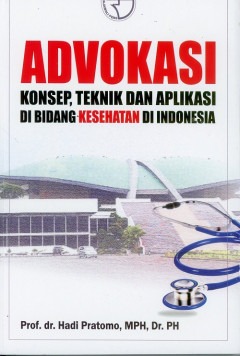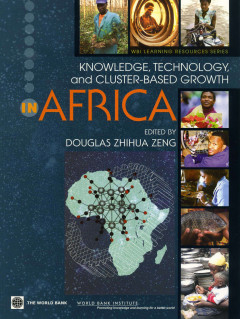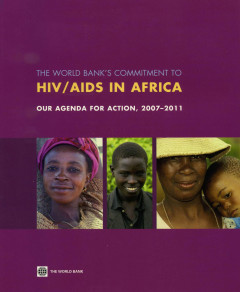Ditapis dengan
# Debug Box
/var/www/dpr_slims_baru/lib/SearchEngine/SearchBiblioEngine.php:687 "Search Engine Debug 🔎 🪲"
Engine Type ⚙️: "SLiMS\SearchEngine\SearchBiblioEngine"
SQL ⚙️: array:2 [ "count" => "select count(sb.biblio_id) from search_biblio as sb where sb.opac_hide=0 and ((match (sb.topic) against (:subject in boolean mode)))" "query" => "select sb.biblio_id, sb.title, sb.author, sb.topic, sb.image, sb.isbn_issn, sb.publisher, sb.publish_place, sb.publish_year, sb.labels, sb.input_date, sb.edition, sb.collation, sb.series_title, sb.call_number from search_biblio as sb where sb.opac_hide=0 and ((match (sb.topic) against (:subject in boolean mode))) order by sb.last_update desc limit 20 offset 0" ]
Bind Value ⚒️: array:1 [ ":subject" => "'+\"Africa\"'" ]

East Africa And The Horn : Confronting Challenges...
- Edisi
- -
- ISBN/ISSN
- 1-58826-379-7
- Deskripsi Fisik
- 164 hal. ; 23 cm
- Judul Seri
- -
- No. Panggil
- 320 EAS
- Edisi
- -
- ISBN/ISSN
- 1-58826-379-7
- Deskripsi Fisik
- 164 hal. ; 23 cm
- Judul Seri
- -
- No. Panggil
- 320 EAS

Empowering women : legal rights and economic opportunities in Africa
This book is an essential and comprehensive new resource for all practitioners and policy makers interested in gender and development in the Africa region. It providers a clear guide as to which laws matter at the country level for women, and offers a bridge for lawyers and development specialists to understand the linkages between the law and its impact on everyday economic opportunities
- Edisi
- -
- ISBN/ISSN
- 9780821395332
- Deskripsi Fisik
- xxiv, 206 hal. : il. ; 25 cm.
- Judul Seri
- -
- No. Panggil
- -

The Africans a Triple Heritage
- Edisi
- -
- ISBN/ISSN
- 0-316-55200-3
- Deskripsi Fisik
- 336 hlm.; 29 cm
- Judul Seri
- -
- No. Panggil
- 960 MAZ a
- Edisi
- -
- ISBN/ISSN
- 0-316-55200-3
- Deskripsi Fisik
- 336 hlm.; 29 cm
- Judul Seri
- -
- No. Panggil
- 960 MAZ a

Black Africa : Its Peoples and Their Cultures Today
- Edisi
- -
- ISBN/ISSN
- -
- Deskripsi Fisik
- 457 hlm.; 30 cm
- Judul Seri
- -
- No. Panggil
- 960 BLA
- Edisi
- -
- ISBN/ISSN
- -
- Deskripsi Fisik
- 457 hlm.; 30 cm
- Judul Seri
- -
- No. Panggil
- 960 BLA

The fiscal Dimension of HIV/AIDS in Botswana, South Africa, Swaziland, and Ug…
HIV/AIDS continues to take a tremendous toll in Sub-Saharan Africa. In some countries wiyh high HIV prevalence rates, life expectancy has declined by by 10 to 20 years or more. Even where HIV prevalence is about 5 percent (close to region's average), the epidemic has reserved gains in expectancy and other health outcomes achieved over one or two decades.
- Edisi
- -
- ISBN/ISSN
- 978-0-8213-8807-5
- Deskripsi Fisik
- xvi, 292 hal.: il.; 23 cm.
- Judul Seri
- -
- No. Panggil
- -

Knowledge, technology, and cluste-based growth in Africa
This book aims to provide an understanding of how these dynamic enterprise clusters in Africa were formed and have evolved, and how knowledge, human capital, and technology have contributed to their success. These case studies from Ghana, Kenya, Mauritius, Nigeria, South Africa, Tanzania, and Uganda will be of interest to a broad range of development professionals.
- Edisi
- -
- ISBN/ISSN
- 978-0-8213-7306-4
- Deskripsi Fisik
- ix, 130 hal. : il. ; 27 cm
- Judul Seri
- -
- No. Panggil
- -

Africa
This book compiles the latest data and viewpoint on the state of Sub-Saharan Africa’s children. Topics covered include the rational for investing in young children, policy trends in early childhood development (ECD), historical perspectives of ECD in Sub-Saharan Afrika including indigenous approaches, new threats from HIV/AIDS, and the importance of fathers in children’s lives.
- Edisi
- -
- ISBN/ISSN
- 978-0-8213-6886-2
- Deskripsi Fisik
- xxix, 525 hal. : il. ; 23 cm
- Judul Seri
- -
- No. Panggil
- -

The world bank’s commitment to hiv/aids in Africa
The world bank’s commitment to HIV/aids in Africa : our agenda for action, 2007-2011 updates and refocuses the bank’s response to assist countries to achieve the sixth Millennium Development Goal, to help halt and begin to reverse the spread of HIV/AIDS. This agenda for action is a road map for reaffirming the bank’s commitment to combating AIDS in Africa, moving from its initial emergenc…
- Edisi
- -
- ISBN/ISSN
- 978-0-8213-7448-1
- Deskripsi Fisik
- xvii,125 hal. : il. ; 23 cm.
- Judul Seri
- -
- No. Panggil
- -
 Karya Umum
Karya Umum  Filsafat
Filsafat  Agama
Agama  Ilmu-ilmu Sosial
Ilmu-ilmu Sosial  Bahasa
Bahasa  Ilmu-ilmu Murni
Ilmu-ilmu Murni  Ilmu-ilmu Terapan
Ilmu-ilmu Terapan  Kesenian, Hiburan, dan Olahraga
Kesenian, Hiburan, dan Olahraga  Kesusastraan
Kesusastraan  Geografi dan Sejarah
Geografi dan Sejarah